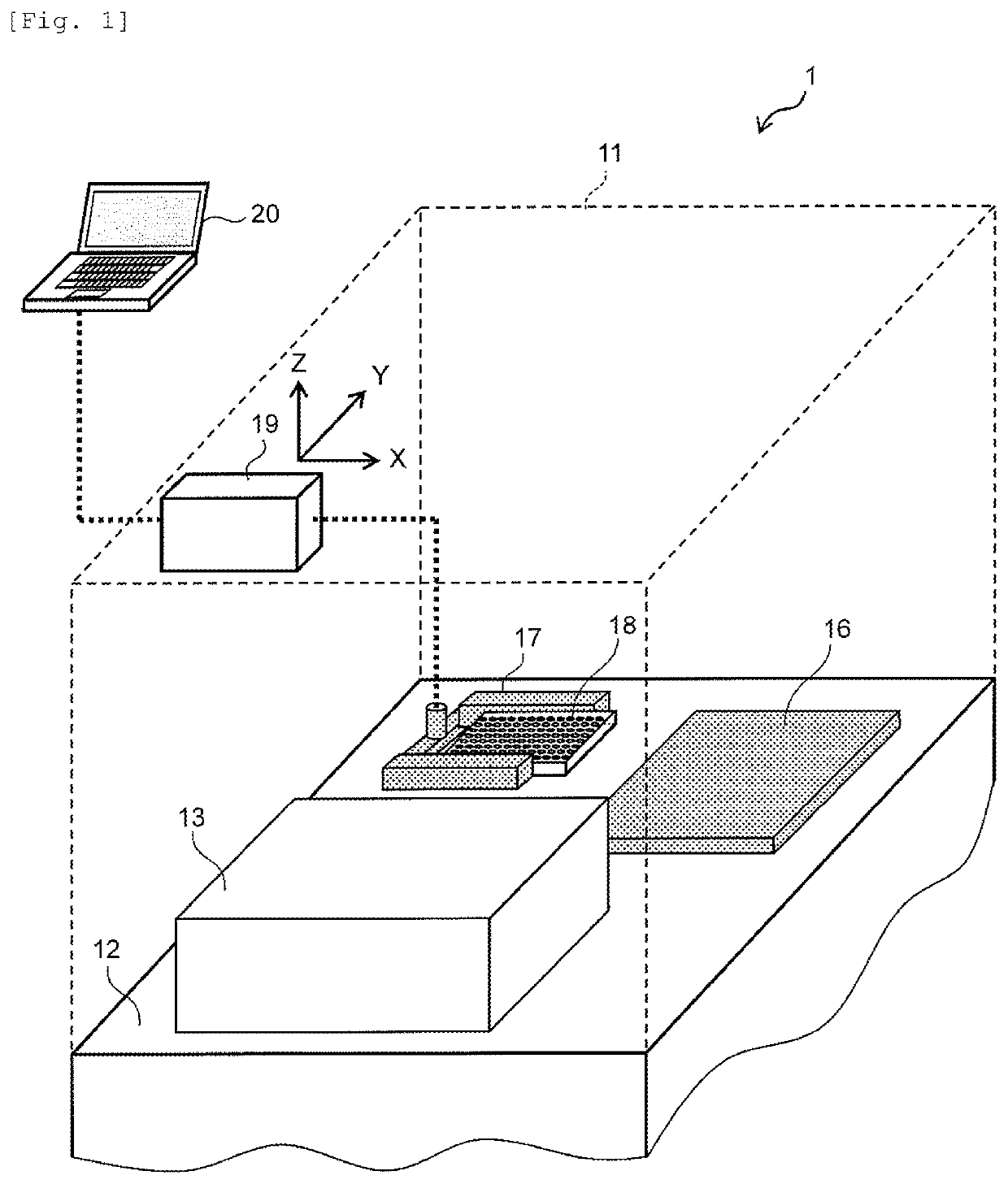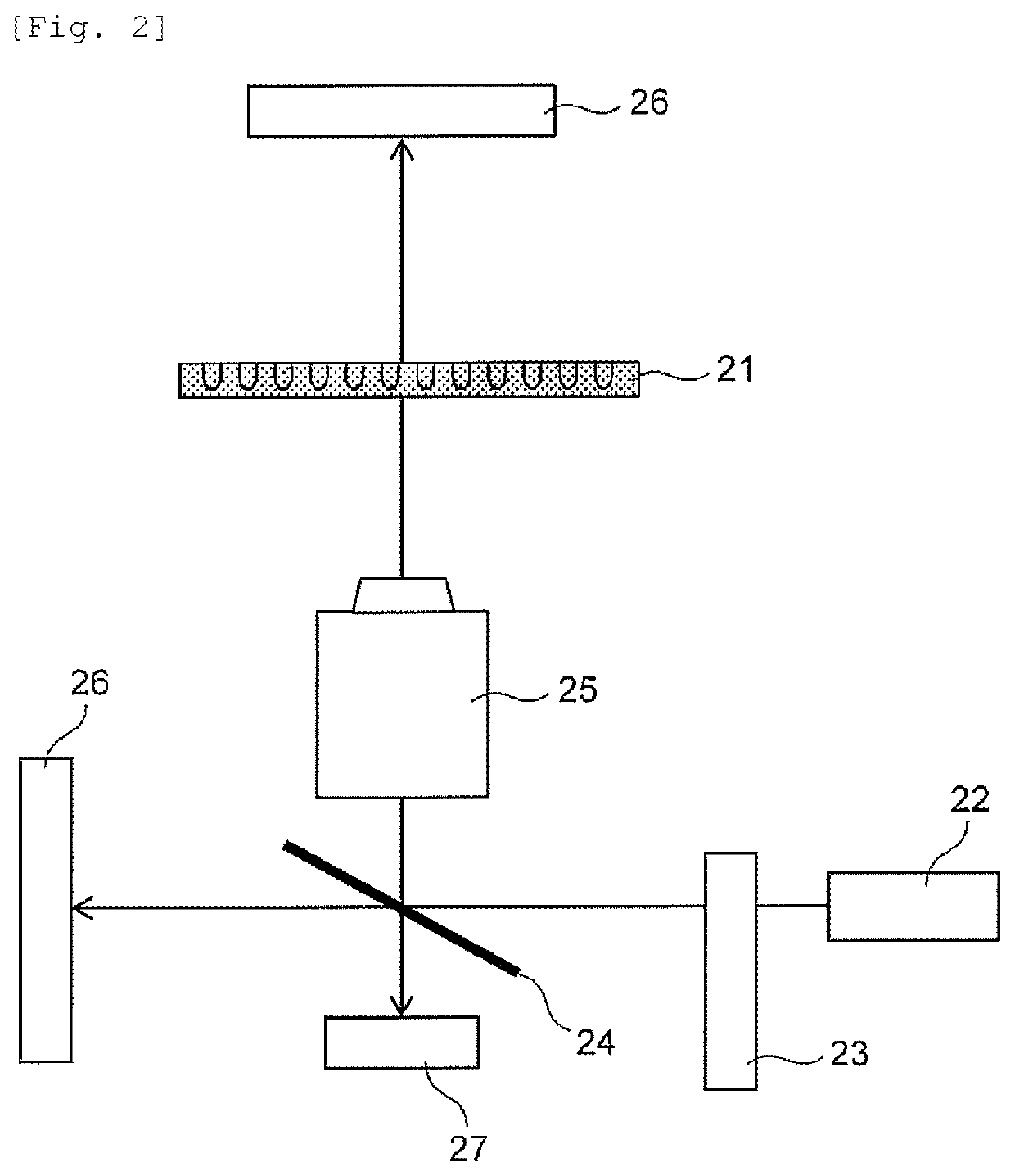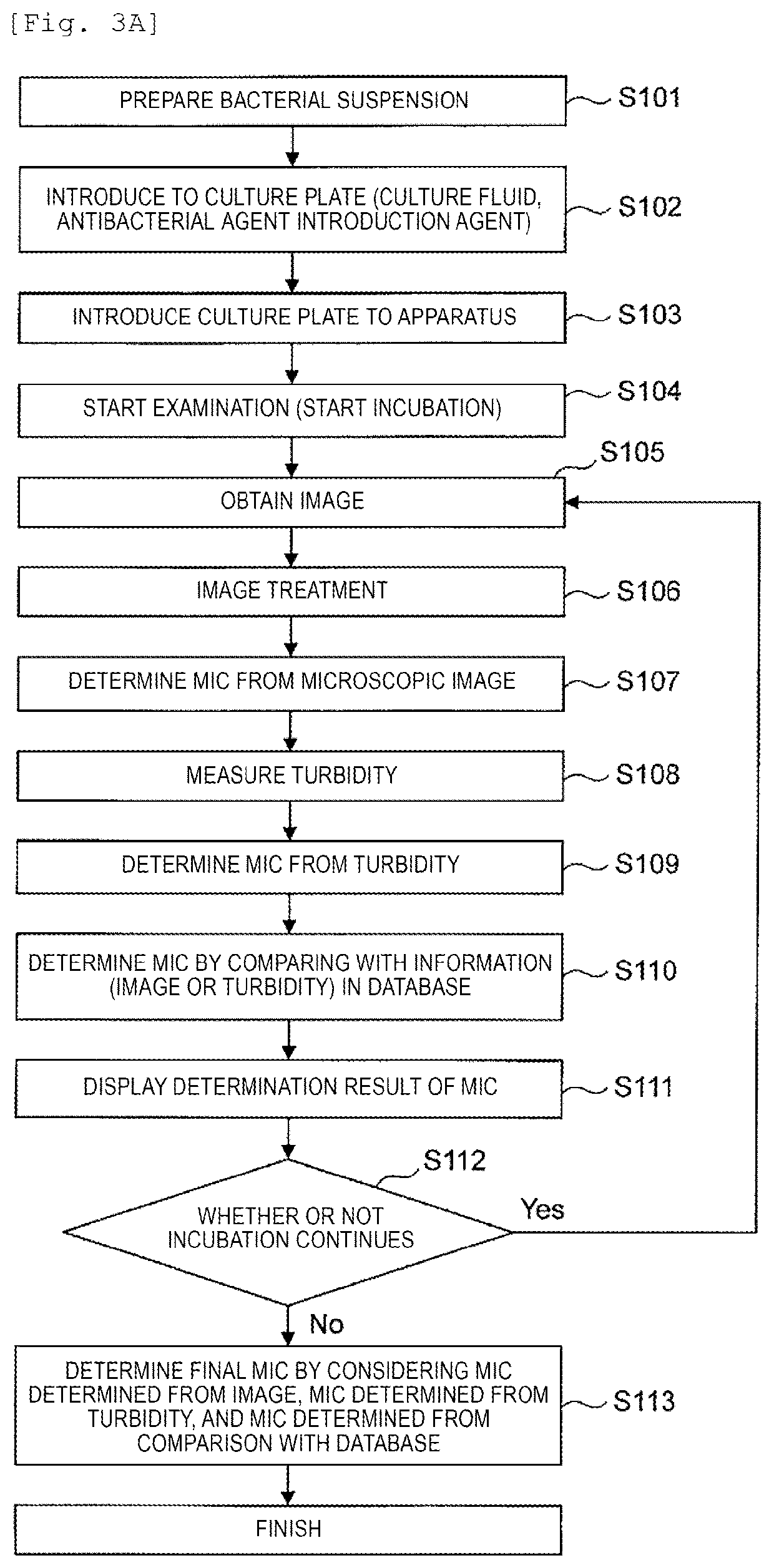Test device
a technology of test device and test tube, which is applied in the field of testing instrument, can solve the problems of decreasing the number of types of antibiotics approved by us fda every year, and the development of new antibiotics, and achieve the effect of determining the susceptibility of bacterial identification or antimicrobial resistan
- Summary
- Abstract
- Description
- Claims
- Application Information
AI Technical Summary
Benefits of technology
Problems solved by technology
Method used
Image
Examples
exemplary embodiment 1
[0083]FIGS. 8 to 11 are views illustrating the microscopic observation images (raw image data before the image treatment) of Enterococcus faecalis (ATCC29212). The obtained image data is stored and held in the control PC, and is used in the bacterial identification or the determination of the MIC. For example, FIG. 8 illustrates images obtained by imaging a state of the Enterococcus faecalis in the Mueller-Hinton culture medium not containing levofloxacin respectively after (a) zero minutes, (b) 90 minutes, (c) 150 minutes, and (d) 210 minutes from the start of culture. Similarly, FIG. 9 illustrates images of Enterococcus faecalis in the culture fluid containing levofloxacin of 0.5 μg / mL, FIG. 10 illustrates images thereof in the culture fluid containing 1.0 μg / mL, FIG. 11 illustrates images thereof in the culture fluid containing levofloxacin of 2.0 μg / mL, and the target subjects which appear to be white in FIGS. 8 to 11 are the Enterococcus faecalis.
[0084]In FIGS. 8 and 9, a stat...
exemplary embodiment 2
[0090]FIG. 15 is a view illustrating an examination result of the E coli separated from different patients. Specifically, FIG. 15(a) illustrates time-depending change of the areas of bacteria in a case where the E coli separated from a patient A is cultured under the condition where ampicillin is included. In addition, FIG. 15(b) illustrates time-depending change of the E coli in a case where the E coli separated from a patient B is cultured under the condition where ampicillin is included. Both of FIGS. 15(a) and 15(b) standardize the areas of the bacteria by the areas of the bacteria when the culture is started.
[0091]In FIG. 15(a), compared to a case where the antimicrobial agent is not included, the area slightly increases even in a case of ampicillin of 512 μg / mL. Meanwhile, in FIG. 15(b), the increase tends to be stopped in a case of ampicillin of 4 μg / mL, and when the concentration of ampicillin is 8 μg / mL or greater, it can be ascertained that the bacteria are damaged due to ...
exemplary embodiment 3
[0094]FIG. 18 is a view illustrating an examination result of Staphylococcus aureus separated from different patients. Specifically, FIGS. 18(a) and 18(c) illustrate time-dependent change of the areas of the bacteria in a case where the Staphylococcus aureus separated from the patient A is cultured under the condition where ampicillin or vancomycin is included. In addition, FIGS. 18(b) and 18(d) illustrate time-dependent change of the E coli in a case where the Staphylococcus aureus separated from the patient B is cultured under the condition where ampicillin or vancomycin is included. In FIGS. 18(a) to 18(d), the area of the bacteria is standardized by the area of the bacteria at the start of culture.
[0095]In FIG. 18(a), compared to a case where the antimicrobial agent is not included, the area slightly increases even in a case of ampicillin of 0.125 μg / mL, and proliferation of ampicillin is interrupted when the concentration of ampicillin is 0.25 μg / mL or greater. Meanwhile, in FI...
PUM
| Property | Measurement | Unit |
|---|---|---|
| first wavelength | aaaaa | aaaaa |
| temperature | aaaaa | aaaaa |
| wavelength | aaaaa | aaaaa |
Abstract
Description
Claims
Application Information
 Login to View More
Login to View More - R&D
- Intellectual Property
- Life Sciences
- Materials
- Tech Scout
- Unparalleled Data Quality
- Higher Quality Content
- 60% Fewer Hallucinations
Browse by: Latest US Patents, China's latest patents, Technical Efficacy Thesaurus, Application Domain, Technology Topic, Popular Technical Reports.
© 2025 PatSnap. All rights reserved.Legal|Privacy policy|Modern Slavery Act Transparency Statement|Sitemap|About US| Contact US: help@patsnap.com



